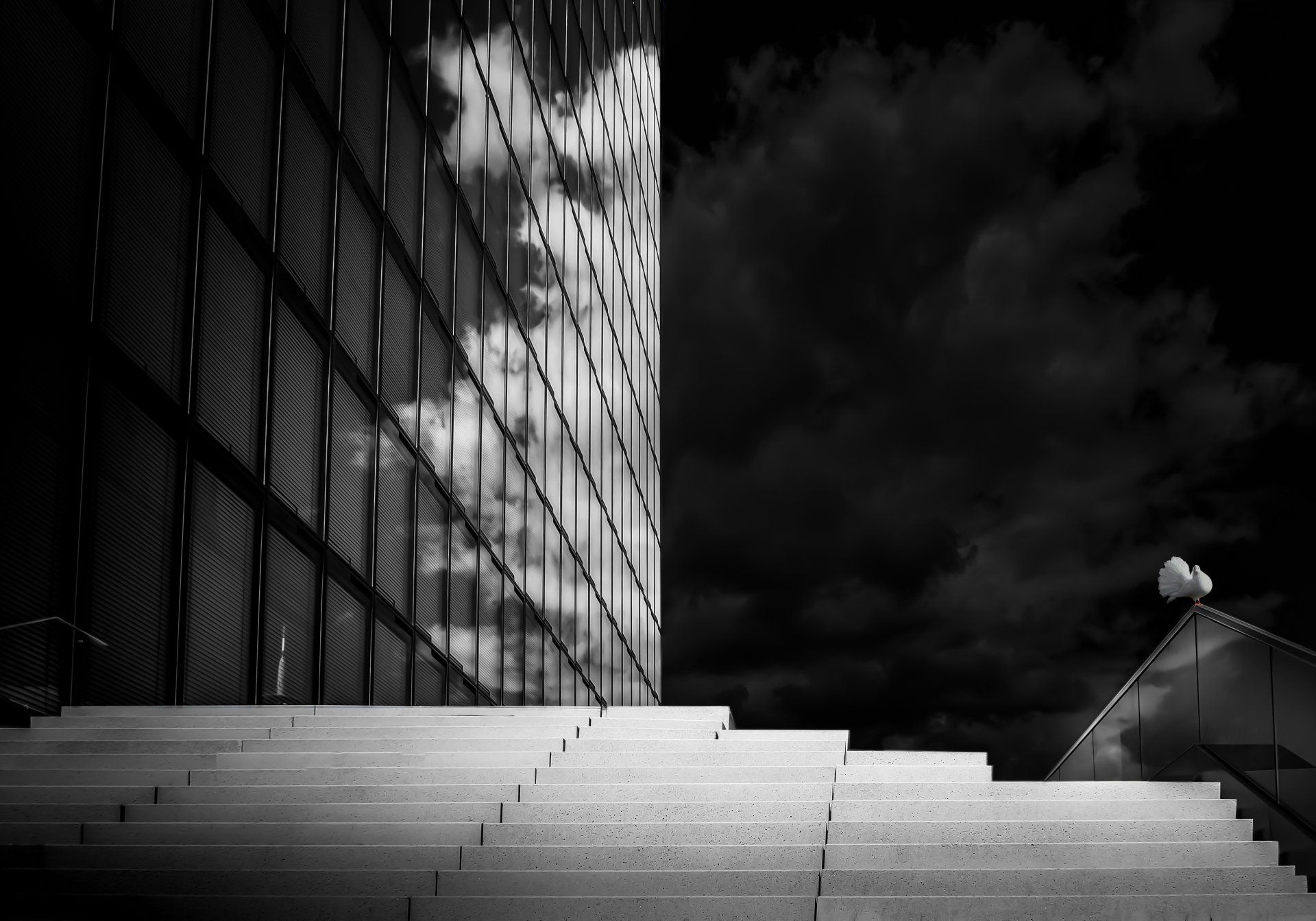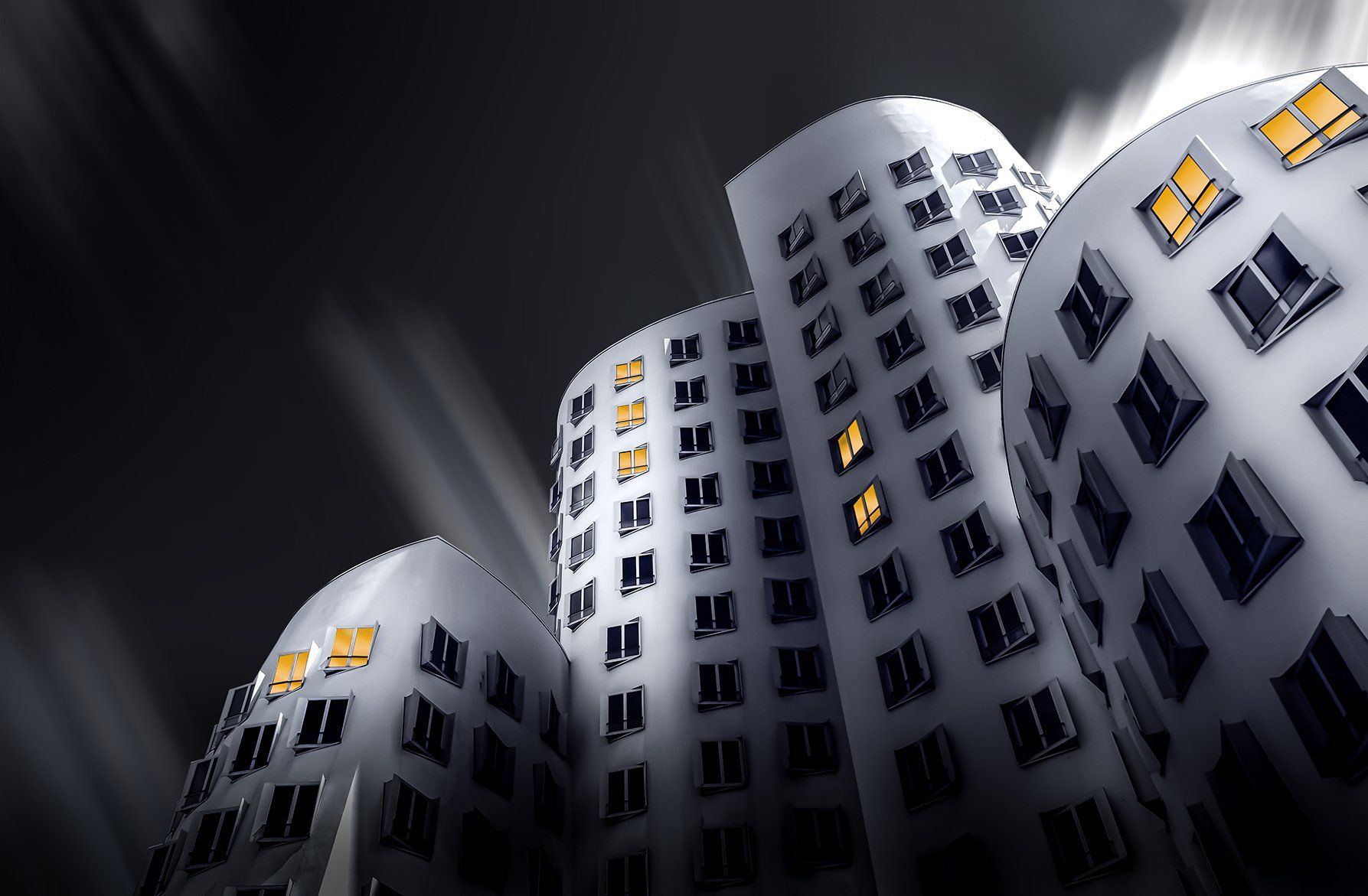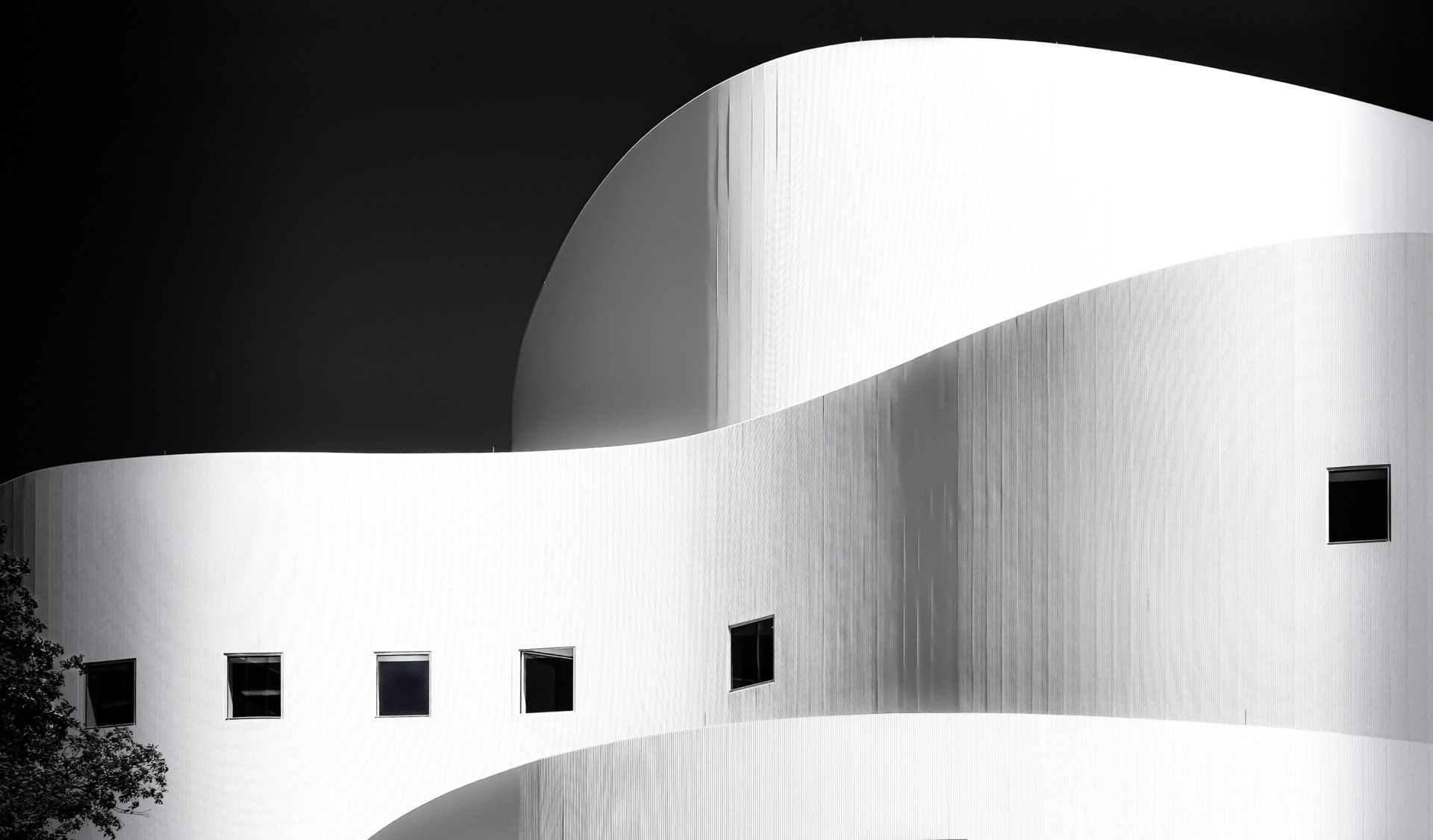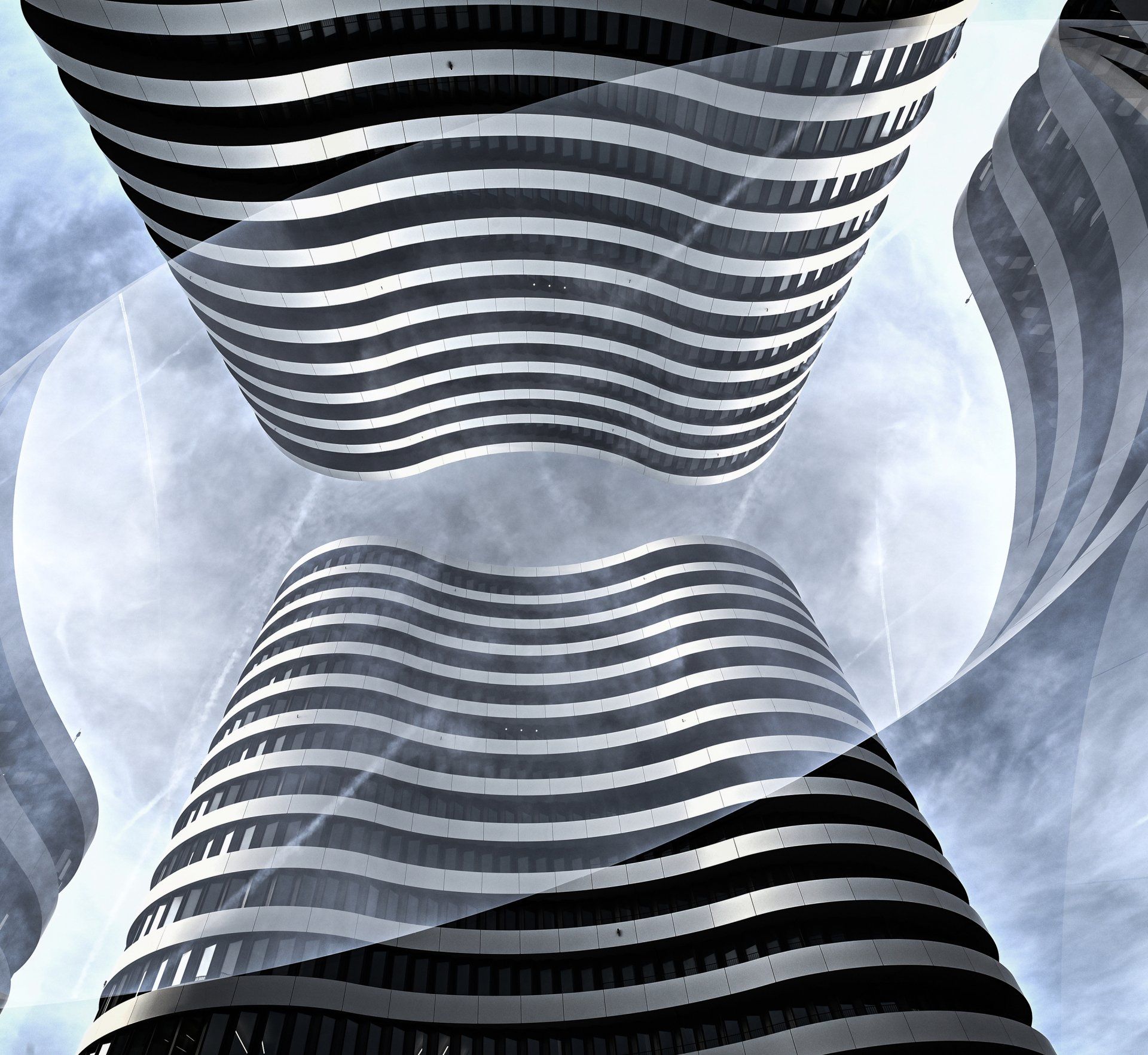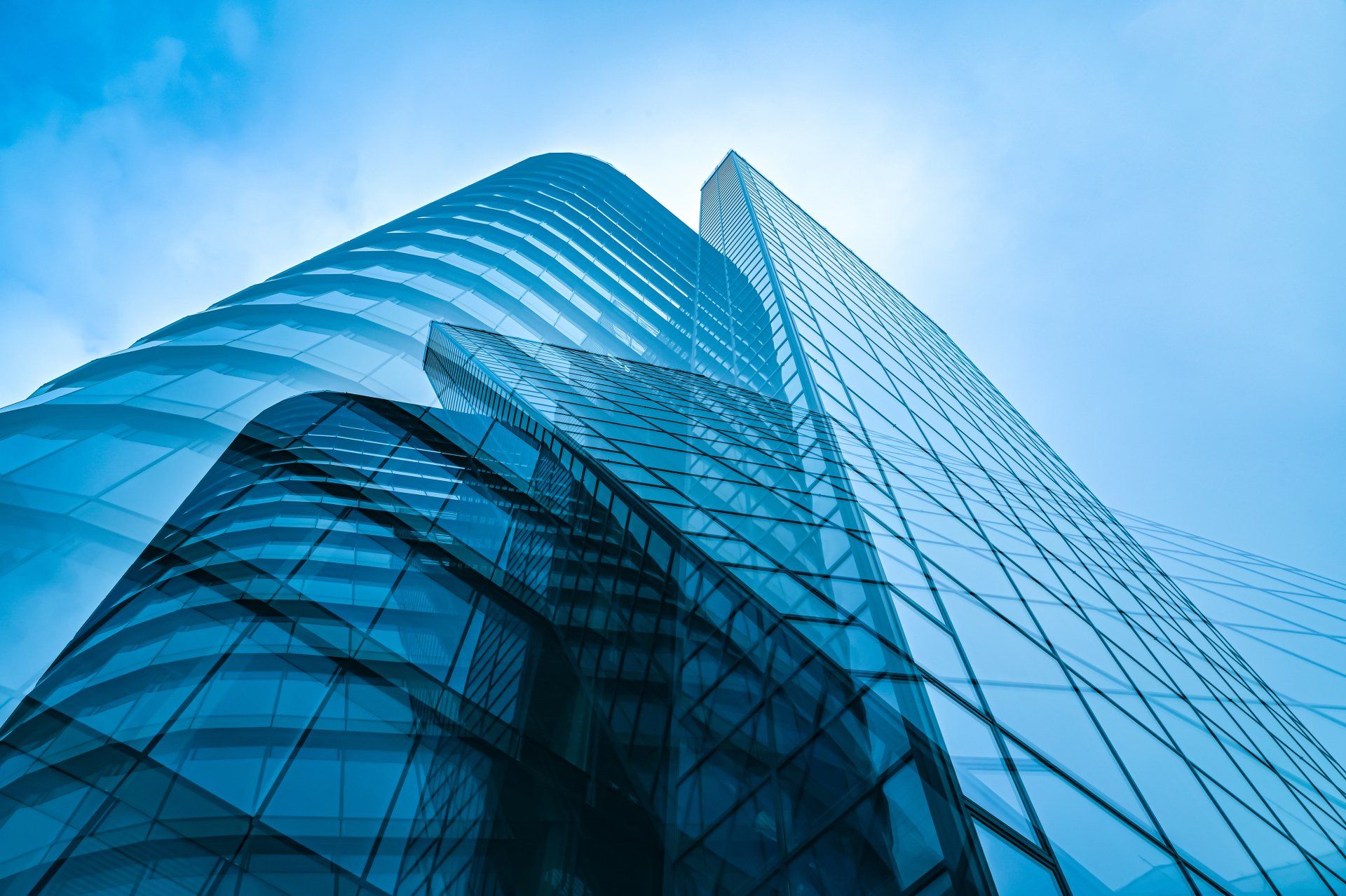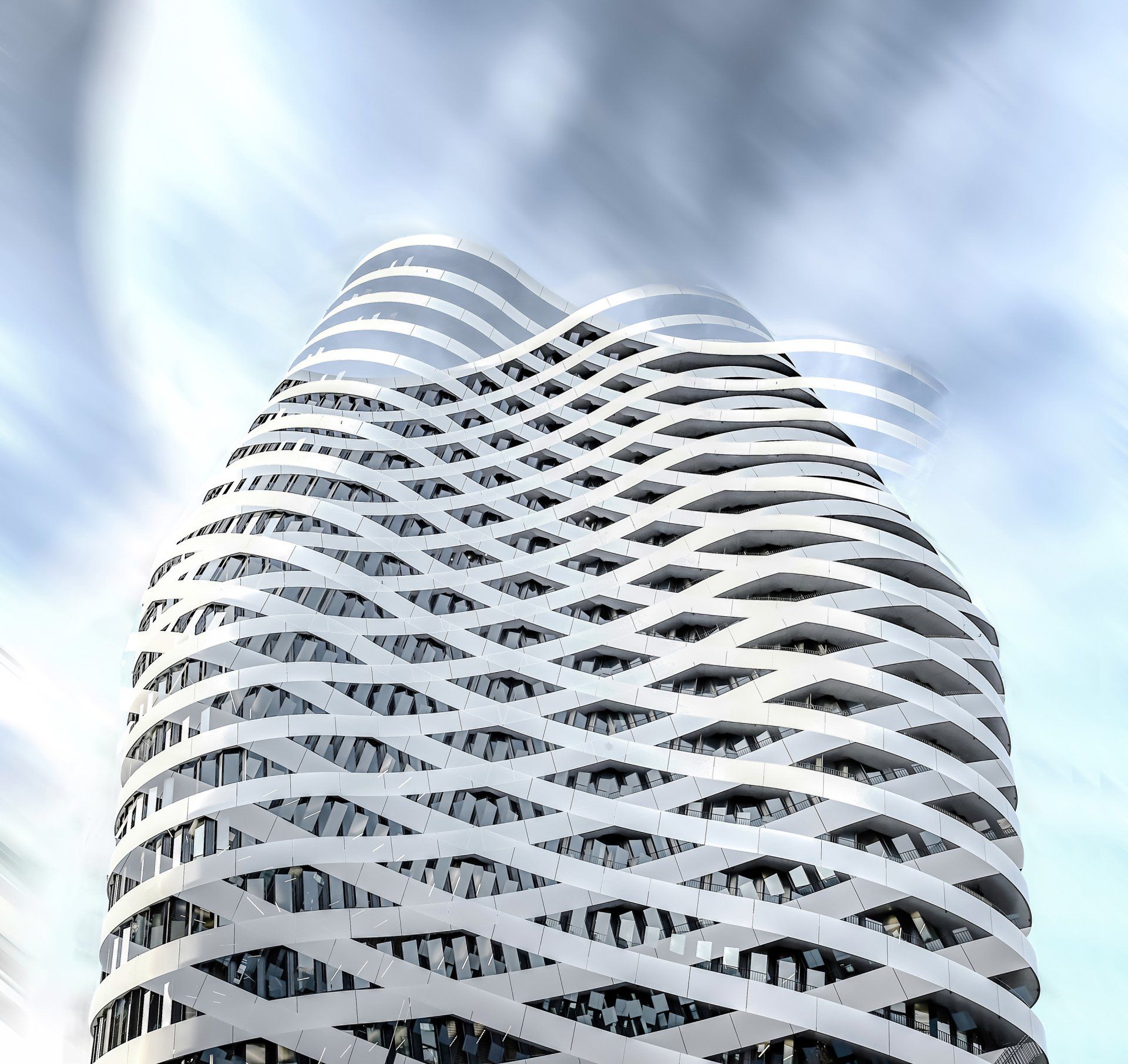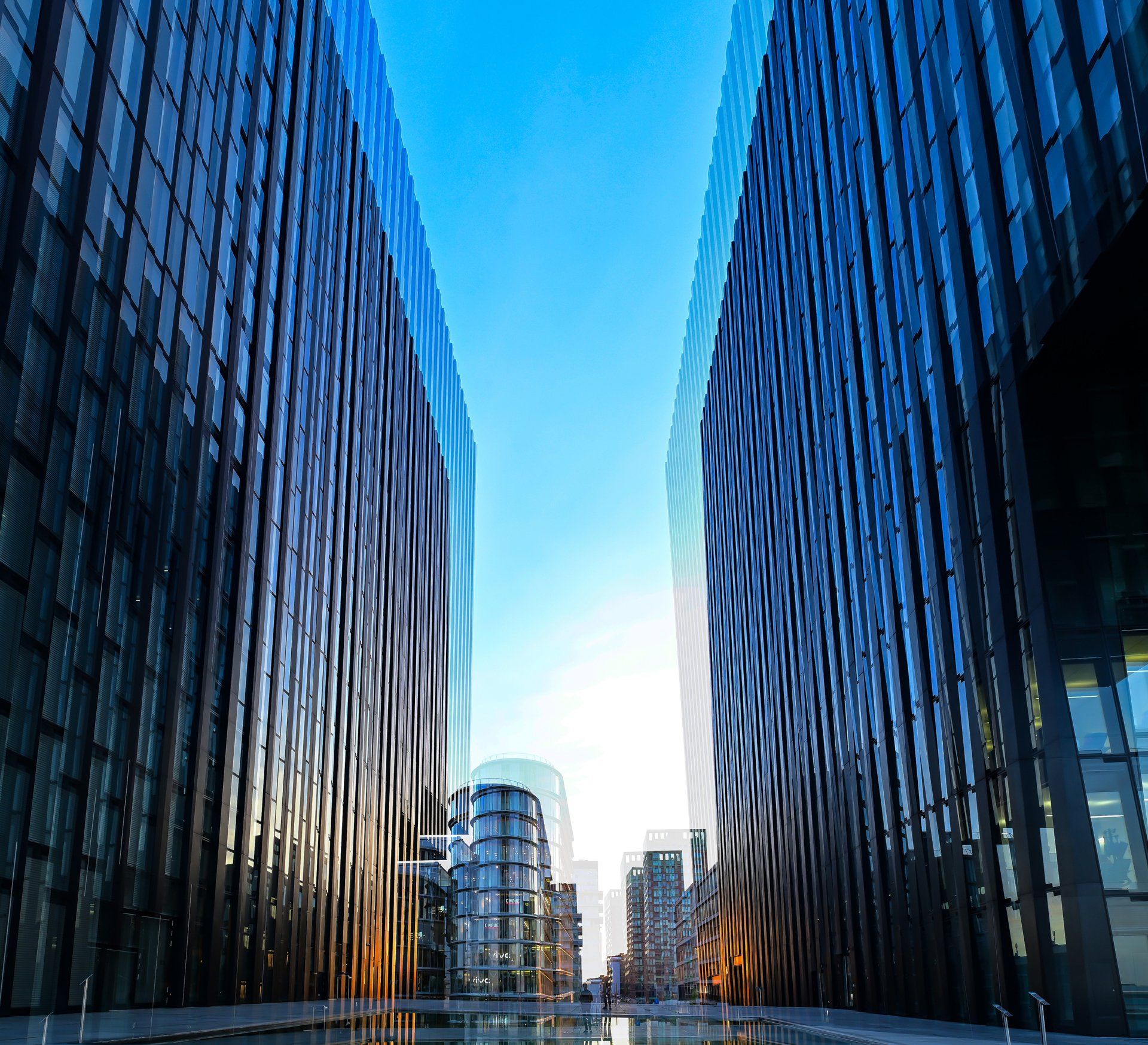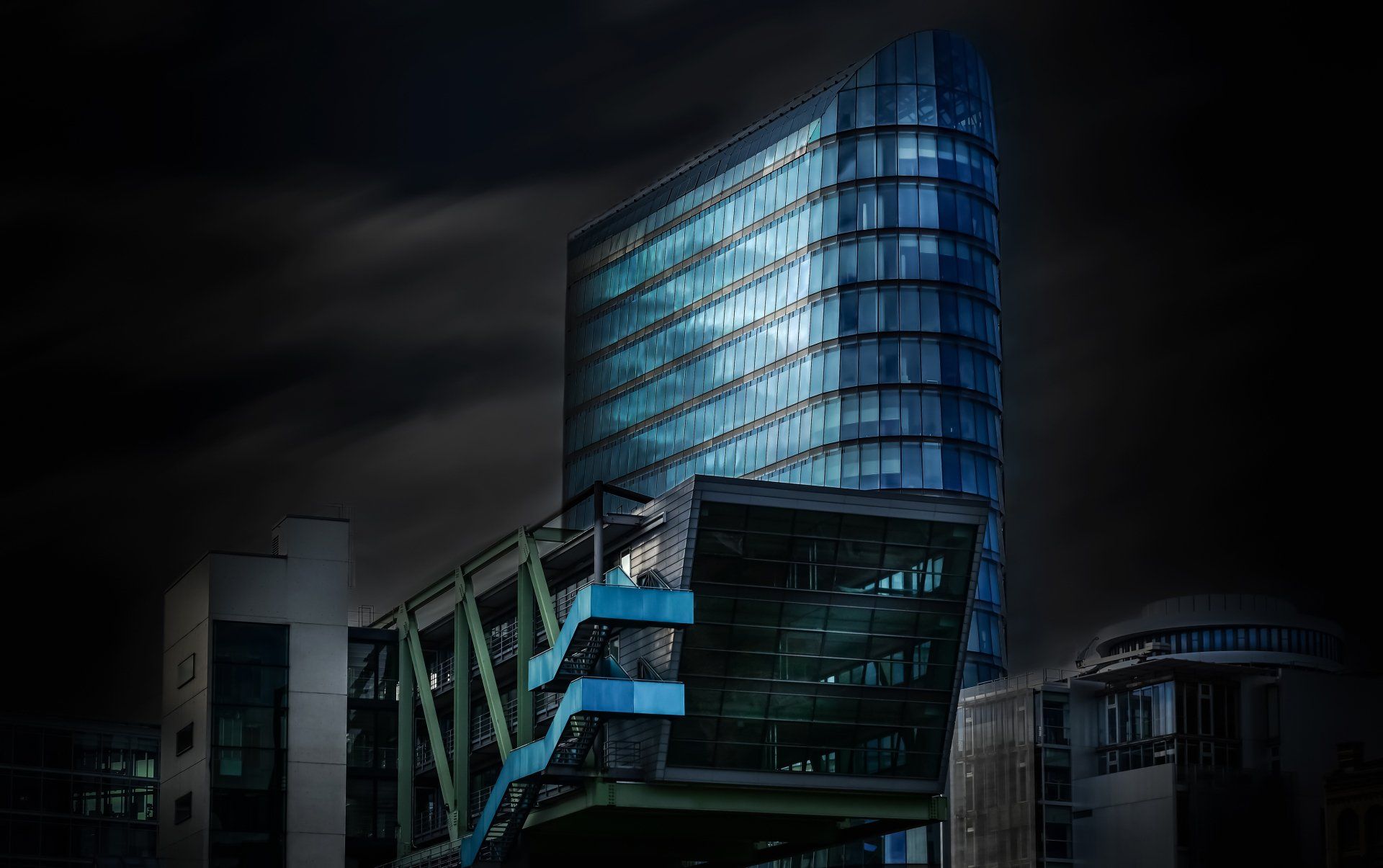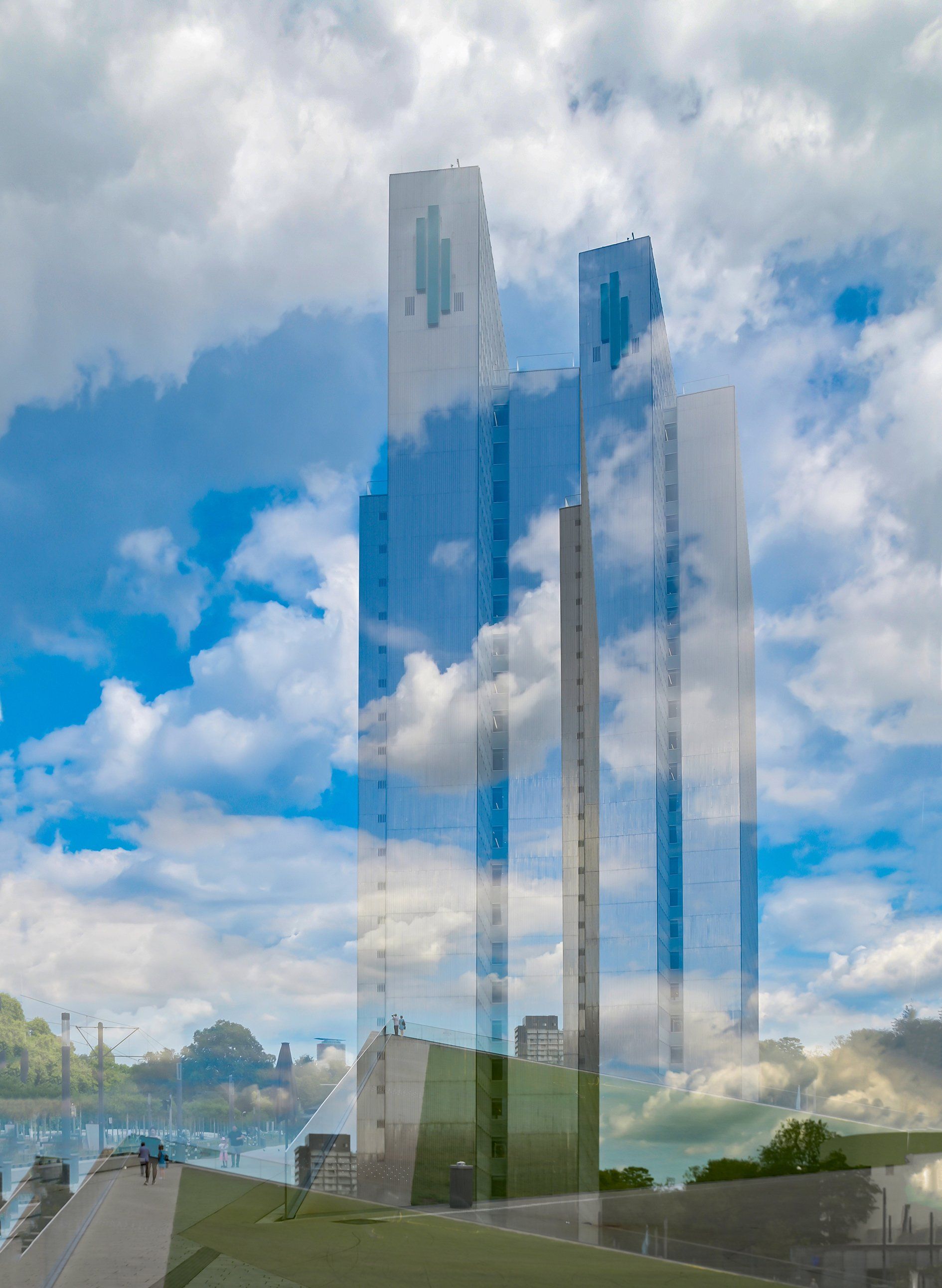Düsseldorf Zollhof - Expressive Gebäude schmücken das Rheinufer
Düsseldorf war einst ein mächtiger Schifffahrtshafen und ein Schlüsselelement der europäischen Handelsmacht vom spätrömischen Reich bis zum Zweiten Weltkrieg und wurde am Ende des Zweiten Weltkriegs zur Hauptstadt des Landes Nordrhein-Westfalen ernannt. Die zweite Hälfte des 20. Jahrhunderts war jedoch nicht so freundlich zur Stadt.
Wie so viele Industriestädte waren auch die Seehäfen von Düsseldorf am stärksten rückläufig, als die westlichen Volkswirtschaften von Produktion und Transport zu Information und Finanzen übergingen. Als eines der größten Unternehmen der Stadt, Mannesmann, seinen Betrieb schloss, verloren viele ihre Arbeitsplätze und der Hafen selbst verfiel.
Um die Umgebung wieder zum Leben zu erwecken, hat der Osthafen den langen, bewussten Marsch in Richtung Sanierung begonnen, der bereits große Erfolge erzielt hat.
Jetzt beherbergt der Düsseldorfer Hafen eine spektakuläre postmoderne Architektur, darunter Gebäude des Architekten, die am engsten mit zeitgenössischen Statussymbolen verbunden sind, die den Unternehmenserfolg kennzeichnen: Frank Gehry.
Die bekanntesten Gebäude im neu gestalteten Düsseldorfer Hafen sind drei verdrehte Konstruktionen von
Frank
Gehry, die sich in seinem ikonischen Stil spiralförmig in den Himmel erstrecken. Ihre verspiegelten Wände und mattweißen Oberflächen symbolisieren die modernistischen Bestrebungen des Hafens. Sie mögen nicht so offensichtlich zweckmäßig sein wie die alten Werften, aber die glänzenden Fassaden veranschaulichen den neu erklärten Zweck der lokalen Hafenindustrie.
Meine Fotos sind Triplex-Fotos, dunkelgrau, dunkelblau und weiß. Sie haben dadurch mehr Ausdruck ...
Stahl und Minimalismus in der Architektur: Metapher für die Trennung und Isolation des Individuums in der heutigen Gesellschaft. Städte können isolierende, einsame Orte sein, an denen viele von uns völlig anonym leben - ohne zu wissen, wer Nachbarn sind oder wer in der Wohnung im Erdgeschoss lebt. Aber mit den orangefarbenen Lichtern möchte ich das brechen. Ein warmes Licht als Symbol für lebendige Städte.
Düsseldorf Harbour - Twisted buildings adorn the banks of the Rhine river
Once a mighty shipping port and a key cog in European trade power from the late Roman Empire all the way through the second World War, Dusseldorf was named capital city of the state of North Rhine-Westphalia at the end of the latter. The second half of the 20th Century was not as kind to the city, however.
Like so many industrial cities, the seaports of Dusseldorf were among the cities faced with the steepest decline as the Western economies shifted from manufacturing and transport to information and finance. When one of the city’s largest companies, Mannesmann, closed their operations, many lost their jobs and the harbor itself became dilapidated.
In a bid to bring the surroundings back to life, the East harbor has started the long, deliberate march toward redevelopment, which has already met grand success.
Now, Dusseldorf Harbor is home to some spectacular postmodern architecture, including buildings by the architect most closely associated with contemporary status symbols signifying corporate success: Frank Gehry.
Easily the most famous buildings in the new-look Dusseldorf Harbor are three twisted constructions by Gehry, spiraling and stretching into the sky in his iconic style, their mirrored walls and matte white finishes symbolizing the modernist aspirations of the harbor. They may not be as obviously utilitarian as the shipyards of old, but the gleaming facades do illustrate the newly stated purpose of the local harborside industry.
My photos are triplex photos, dark grey, dark blue and white. So they convey more expression.
Steel and minimalism in architecture: metaphorical for the separation and isolation of the individual in today's society. Cities can be isolating, solitary places where many of us live entirely anonymously – never knowing who their neighbours are or who lives in the flat downstairs. Through usage of orange lights I wish to break this feeling and replace it by a warm symbol that exemplifies living cities rather than isolated ones.
Vivid cities, Düsseldorf
The Motif Collective October 2020
Thanks to the jury who chose my photo 'Vivid cities" to 3rd Place - Outstanding Achievement in the Architecture category. I am very proud of this award.
The Motif collective - shortlisted into the top tier of the theme competition symmetry
Düsseldorfer Schauspielhaus
Das Düsseldorfer Schauspielhaus ist mit seiner mehr als hundertjährigen Tradition eine der größten und bedeutendsten Sprechbühnen im deutschsprachigen Raum.
Das Gebäude, in den Jahren 1965 bis 1970 nach den Plänen des Architekten Bernard Pfau errichtet, bildet mit dem Dreischeibenhaus eines der bedeutendsten Ensembles der Nachkriegsarchitektur in Deutschland. Es ist aus theatergeschichtlichen, architektonischen und politischen Gründen außerordentlich bemerkenswert.1998 wurde das Schauspielhaus in die Denkmalliste eingetragen.Das Schauspielhaus zeichnet sich durch eine horizontale Schichtung und geschwungene, organische Formen aus.
»Kultur schafft hier einen Raum des Willkommens und des Wohlwollens. Hier wird Hoffnung geschöpft, Motivation gestärkt und zur Kreativität angeregt. Kultur ist hier nicht nur für die Elite, sondern für alle, unabhängig von Geschlecht, Alter, Hautfarbe, ethnischer Herkunft, Glaubens-, oder Klassenzugehörigkeit.
The Düsseldorfer Schauspielhaus, with a tradition going back more than a century, is one of the largest and most important theaters in German-speaking countries. The building, erected between 1965 and 1970 according to plans by the architect Bernard Pfau, and the Dreischeibenhaus form one of the most important ensembles of post-war architecture in Germany. It is extraordinarily remarkable for reasons of theater history, architecture and politics. In 1998 the playhouse was entered in the list of monuments. The playhouse is characterized by a horizontal layering and curved, organic forms.
»Here culture creates a space of welcome and benevolence. Here hope is drawn, motivation strengthened and creativity stimulated. Culture here is not just for the elite, but for everyone, regardless of gender, age, skin color, ethnic origin, religion or class.
Mediahafen
Dreischeibenhaus & Köbogen

